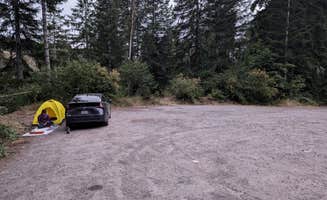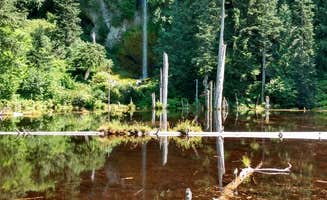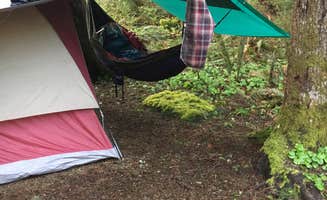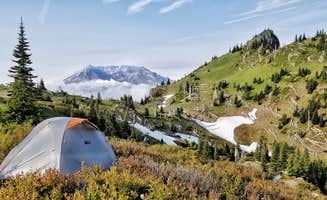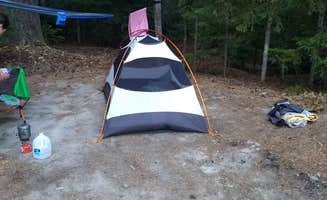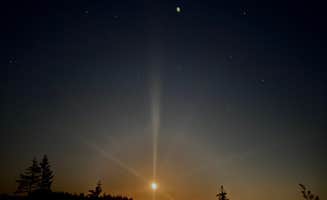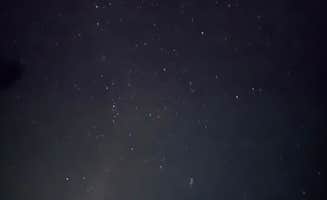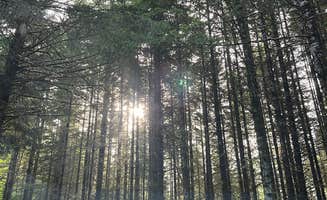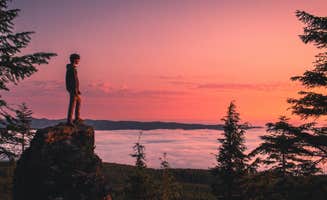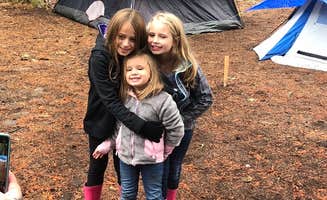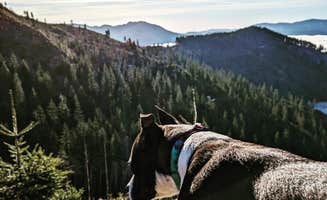Dispersed camping areas near Longview, Washington range from high-elevation sites with mountain views to forested pull-offs along creeks and rivers. Summer temperatures typically reach 75-85°F during peak camping months, while spring and fall camping often includes nighttime lows in the 40s. Most sites remain accessible from late May through October, though many forest roads become impassable after heavy rainfall.
What to do
Waterfall hikes: At Beaver Falls Trailhead, a short trail leads to scenic falls. "The waterfall is amazing and only a 15 minute hike down! The only reason this place got lower than a 5 star is because of all the trash near the parking lot," notes Jaden J. The trail access point can be confusing, as Jeremy B. explains: "Don't make the mistake I did. The trail all the way on the left side of the parking lot takes you to the falls. The trails in the middle of the lot are super steep and muddy and don't lead to the falls."
Wildlife watching: High-elevation sites offer prime opportunities for spotting mountain wildlife. Clayton P. from Road to Snag Lake reports, "Amazing views and complete silence! Tons of rabbits and wildflowers." Jeremy B. encountered unique wildlife while exploring side roads in this area: "I saw a porcupine for the first time while wandering one of the side roads!"
Mushroom hunting: The forests around Mount St. Helens provide ideal conditions for edible mushrooms. "The forest has majestic trees and when it rains, it resembles a rainforest. During August and September, you can find tons of edible mushrooms," notes Starseed P. from Butte Camp/Climbers Bivouac.
What campers like
Elevated views: Higher elevation sites offer spectacular vantage points. At Road to Snag Lake, Ryan S. describes, "There are several spots off the road around these radio tower stations and it is quite secluded. The spot we chose was the best as it is away from the towers and buildings, plus has a great view overlooking the valley and bay, and you can see the ocean between the peaks in the distance."
Accessible waterfalls: Many campers appreciate overnight spots with nearby water features. Sarah J. from Beaver Falls Trailhead shares, "The trails are great and the waterfall is beautiful. The pulloff is muddy and hard but it's worth it." Similarly, John P. notes, "Not scenic (though the waterfall that is a short hike away is)."
Weekday solitude: Mount St. Helens Dispersed Camping offers quiet midweek camping opportunities. Patsy P. reports, "I was pleasantly surprised when I arrived to see only one other person camping nearby. I was able to find a spot next to a couple others. Traffic wasn't too bad for a Mon/Tues night." Clayton P. had a similar experience elsewhere: "We stayed on a Friday night in August and were the only ones here."
What you should know
Road conditions: Forest roads vary significantly in quality and accessibility. Ryan S. warns about Road to Snag Lake: "The road getting here is a bit rough with lots of washboard, steep grades and rocks. But it's fun." At Gifford Pinchot National Forest-Canyon Creek, Chris J. cautions, "Like others said road getting in sucks."
Cell service: Connectivity varies widely between camping areas. Kyle B. notes about Tillamook State Forest: "Be aware that Verizon cell service is nonexistent in the area." Conversely, some sites offer surprising connectivity, as Melissa S. reports: "Open spot for starlink. Good cell service also."
Security concerns: Some camping areas have experienced issues. Ryan D. shares about Beaver Falls Trailhead: "Cops came around about 930pm to inform me there is a high level of criminal activity around. To stay at my own risk. He was very friendly and left me his card. Lock up, don't leave anything outside and be aware."
Tips for camping with families
Site selection: Look for flat, developed sites when camping with children. Kevin W. describes McBride Lake NF-81: "If you're going tent camping, there are about four flat places for tents. The area has no trails, so you would not have to worry about people wandering into the campsite."
Noise considerations: Be prepared for varied noise levels depending on location and timing. One camper reports, "Weekday camping typically offers more solitude, as OHV and logging activity can create noise on weekends." Similarly, Kyle B. notes about Tillamook State Forest: "Heard some OHV noise at night, and target shooting in the distance at sunrise."
Access to amenities: Most dispersed sites lack facilities, so plan accordingly. Jeffrey P. advises about Canyon Creek: "Would definitely recommend sleeping mats if you're in a tent as the ground's rather hard. The spot we went didn't really have anywhere for hammocks but saw a couple on the way out."
Tips from RVers
Turnaround space: Many forest roads have limited space for maneuvering larger vehicles. Kevin W. from Butte Camp/Climbers Bivouac notes: "Group camping with 4-5 places for tents and 2 maybe 3 spots for travel trailers but will need to back in."
Accessibility for different rig sizes: Assess road conditions before attempting access with larger rigs. About Tillamook Forest Dispersed, James T. warns: "No good spots off the road for 25 ft travel trailer. Guns/target practice everywhere." Kevin W. adds about McBride Lake: "Due to the narrow road, it may be a bit more snug with bigger rigs (25+ feet long and anything more than 8+ feet wide)."
Free camping options: Free dispersed camping is available throughout the region. Madison D. notes about Mount St. Helens Dispersed Camping: "This dispersed camping is free, huge bonus in my book. While searching for our perfect spot we did come across a few large parties, making us apprehensive that we would experience our ideal peaceful experience, but we were wrong to be."


